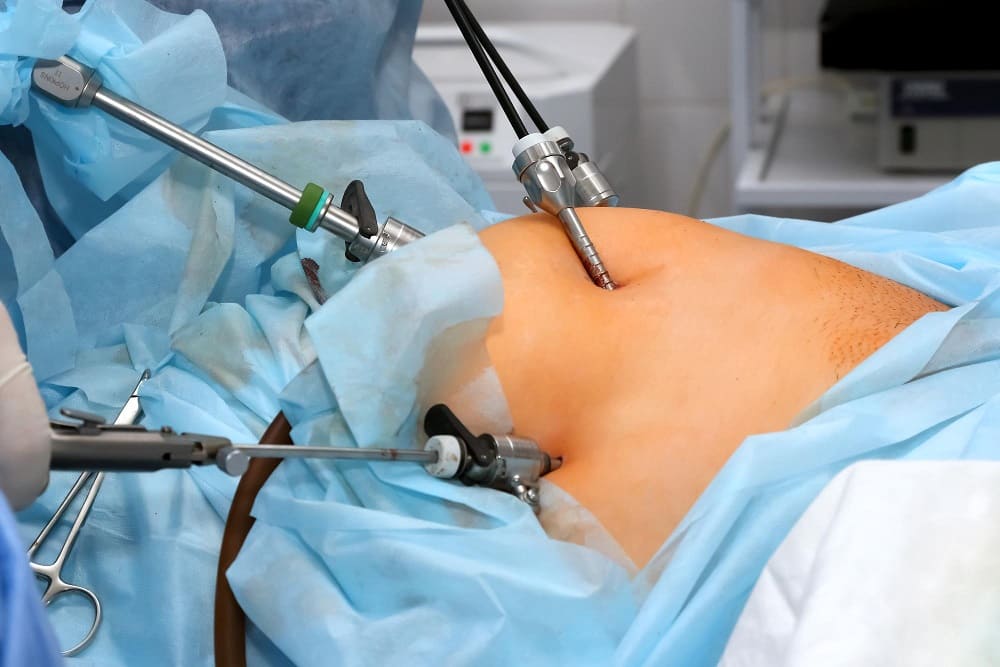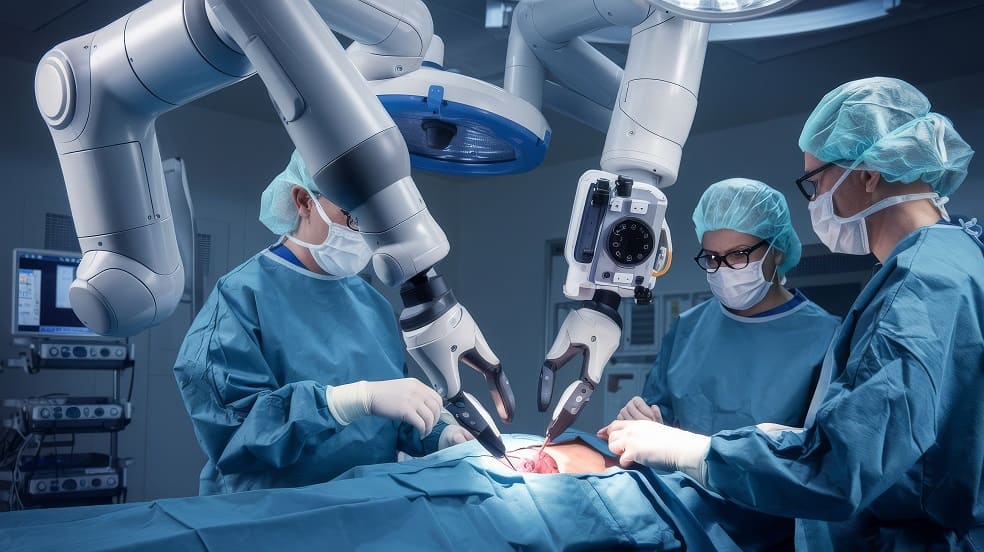
Table of Content:
Most hernias are easily treated with routine surgery. However, some incisional hernias are significantly larger and more complex, requiring careful planning and a tailored approach for lasting repair. While many people view hernias as minor issues needing simple surgery, this isn’t always the case. For some, particularly those with ventral hernias(that is, the hernia of the front wall of the tummy), it can lead to repeated surgeries, pain, and difficulty with daily activities. This complex situation is less common with inguinal hernias.
When a hernia is ignored for years, the defect gradually increases in size and weakens the abdominal wall. The larger the defect size, the more the chances of recurrence. Hence, with increasing size, we need to plan a stronger surgical hernia repair that improves the strength of the tummy wall. Simply increasing the size of the mesh will not be enough to get a permanent solution.
The best chance to get lasting strength is the first surgery. Because with each recurrence, the tummy wall gets weakened further each time. The scar tissue is always weaker than the original muscles and tendons. Hence, it is always a good choice to be a bit aggressive in your surgical approach to prevent the recurrence.
The tummy wall gets gradually weakened with age. Females are also likely to have weak abdominal wall muscles, especially after multiple pregnancies. These factors should be taken into consideration during a hernia repair to get a recurrence-free outcome.
Hernias occurring in the area near the bony prominences are difficult to treat. This is because the surgeon gets less space to have adequate coverage of mesh to get a good repair. At times, the margin of the defect is formed by the bone itself, making it a tough situation.
Some patients have a medical condition that makes treatment even more difficult. Especially chronic cough, constipation, and major cardiac problems make recovery difficult. With a very large hernia, when all the intestines in the hernia are pushed back into the tummy, patients may have breathing problems after surgery.
Both laparoscopic (minimally invasive) and open surgical options are available, even for complex and recurrent hernias. A thorough evaluation is necessary to determine the optimal treatment approach for each patient. Generally, these patients require a form of abdominal wall reconstruction (AWR) surgery, which can be performed using open, laparoscopic, or hybrid methods.
Abdominal wall reconstruction includes a variety of surgeries that help in strengthening the tummy wall. This includes the release of muscle and tendons at certain places so that the defect can be closed by pulling it too much. With these surgeries, it becomes possible to place a large mesh, which remains between two layers of muscles or tissue (so that they remain there even without fixing it with sutures), and mesh can be placed beyond the bony margins. The technical names of such surgeries are Open RS meshplasty, or Open RS meshplasty with B/L TAR, or RS meshplasty with PCS or ACS (Won’t confuse too much with the details of these surgeries, but mentioning them so that you can understand them if your medical reports mention such names in place of AWR)
Thus, such a surgery, when done with proper planning, will give a recurrence-free hernia repair. Some patients having very large hernia with lots of intestines coming out in the hernia would need open surgery for the best results, even with the availability of skill and instrumentation for a laparoscopic AWR.

Abdominal wall reconstruction by laparoscopy is also possible and is being routinely done now for recurrent and complex incisional hernia. Although patient selection is very important. Some patients with very large or complex incisional hernias would be better suited for an open surgery. The technical names of some of these surgeries are eTEP-RS, eTEP-RS with U/L or B/L TAR, TARM, and TAPP for umbilical hernia. (again, won’t go into detail about these, this was just to make you understand some of the terms used in your medical records)
At times, these surgeries are even done for primary ventral hernia surgery when there are multiple defects or in an obese person or females with weak abdominal walls. This is done to achieve a recurrent free primary hernia repair.

Hybrid surgery is a combination of Open and laparoscopic AWR. Here major part of surgery is done by laparoscopic method, avoiding large incisions and cutting of muscles, giving the benefits of a laparoscopic surgery. Some part of surgery like placing a mesh and closing or repairing the defect is done by open method, to reduce the surgery time and a better closure of the defect. Again, patient selection is important, and the overall plan is customized for each individual patient to achieve the best outcome.
In some rare patients, so much part of the intestines is out of the tummy inside the hernia and for so long a time that it is not possible to put it back in the tummy without causing serious breathing problems. In such patients, the tummy wall is gradually stretched with procedures like Botox injections of tummy wall muscles with or without preoperative progressive pneumoperitoneum (PPP). In preoperative progressive pneumoperitoneum, a small silicon catheter/tube is placed in the tummy, and medical gas is filled in the tummy every day for a few weeks so that the tummy wall gets stretched gradually before a planned surgery. This is done in some rare and selected patients in whom hernia repair is not possible due to the large size of hernia.
The right approach is to evaluate the patient thoroughly by a proper clinical examination, getting a USG or an Abdominal CT scan (to assess the complexity of the hernia, the number of defects and defect size, strength of muscles and distance from bones, how much contents are there in the hernia sac) and medical condition of the patient.
Such surgeries are technically complex surgeries, and hence, the duration of surgery is longer.
Once all the hernia contents go inside the tummy and are no longer able to come out after hernia repair with mesh, the pressure inside the tummy increases. This can lead to difficulty in breathing. This has to be anticipated prior to surgery after a proper evaluation.
Some patients having lung or cardiac problems and/or patients with a very large part of intestines coming out in the hernia may need a period of optimization before surgery so that the post-surgery time is smoother. This optimization is done by medications, breathing exercises, and tummy wall stretching procedures.
To hear the patient’s experiences of recurrent hernia surgery, watch this video.
Your health journey is personal. Whether you’re dealing with a small or large hernia, the right medical approach can make all the difference. Dr. Chirag’s approach focuses on patient education, precision, and compassionate care.
If you’re seeking the best hernia doctor in Ahmedabad, look for a specialist who combines medical expertise with a patient-first approach. Your path to recovery starts with understanding your options and working with a trusted medical professional. Get in touch with us.
You can book a video consultation with Dr Chirag Thakkar.
Call +91-8156078064 / 91-8469327630 or contact us to fix an appointment. Visit the ADROIT Centre for Digestive and Obesity Surgery for consultation.
Please subscribe to our YouTube channel to stay connected.
At ADROIT, we don’t just repair your hernia but aim at restoring the patient’s best possible activity level after surgery and giving our patients a very smooth and comfortable surgery experience. In the case of laparoscopic hernia surgery for complex and recurrent hernias, patients recover faster with minimal post-surgery pain and with the best functional outcome.
Dr Chirag Thakkar is a gastrointestinal surgeon. He has been carrying out Gastrointestinal and Weight loss/ Bariatric Surgery for the past 18 years. Surgery for GERD, hiatus hernia, and Obesity are his core areas of interest and expertise. For Acid reflux/ GERD treatment, ADROIT is one of the leading centres in India, providing all facilities under one roof. He also has vast experience in Laparoscopic surgery for gallstone removal.

Dr Chirag Thakkar
Senior Gastrointestinal and Bariatric surgeon
GERD and Esophageal Motility Expert
Hernia Surgery Specialist
Founder Director of ADROIT Centre for Digestive and Obesity Surgery